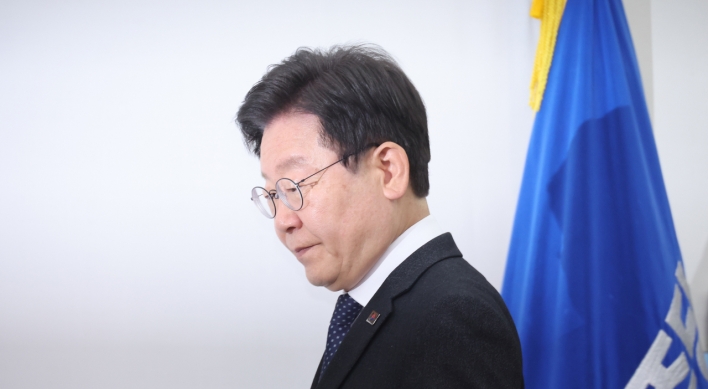N. Korean drone sent from southwestern airport during firing drill
By 정주원Published : April 3, 2014 - 14:56
The drone that crashed on a South Korean border island during Pyongyang's live-fire drill earlier this week is believed to have been sent from an airport on the west coast of North Korea, a military official said Thursday.
South Korea collected the drone from Baengnyeong Island, just south of the western maritime border during North Korea's live-fire drill on Monday.
The drone was discovered while South Korean Marines returned artillery fire after some of the North's shells fell into southern waters during the three-hour drill that began shortly after noon.
The drone flew at an altitude over 3 kilometers toward Baengnyeong Island, prompting soldiers to shoot about 300 rounds of Vulcan guns shortly before 1 p.m. With the maximum range of 2 km, the Vulcans weren't able to shoot down the small aircraft, which was retrieved three hours later.
"The Air Force spotted the unmanned aerial vehicle that was flying from Onchon Airport in North Korea," the official said, asking for anonymity. "The drone is believed to have taken off from the airport."
Standing on the highest level of guard, the rival Koreas dispatched fighter jets near the maritime border to conduct patrol missions and prepare for potential clashes.
The UAV is similar to the drone that flew undetected and was discovered in Paju, south of the demilitarized zone on March 24.
While experts believe Pyongyang developed the small drones based on the Soviet-era designs to enhance its surveillance of South Korea, the drone incursions have raised concerns over South Korea's air defense capacity as the drone recovered in Paju had taken about 200 photos of the border and the capital city Seoul.
Among them were photos taken from airspace above the presidential office in downtown Seoul and military installations near the border, revealing holes in the air security of South Korea.
While some reports said Pyongyang may have acquired the photos with a data transmission system, Seoul's defense ministry said the antiquated drone does not have that capability.
"Although the drone had a 0.9 GHz transmission system, it is used to control the vehicle and receive GPS signals, not for sending images," ministry spokesman Kim Min-seok said in a briefing. "Although the cameras can take photos, (the drone) cannot send the images."
Fingerprints were collected from the UAV found in Paju, which belongs to no South Korean citizen, Kim said, another corroborating evidence that shows the North's involvement.
If the ongoing in-depth analysis confirms the North's responsibility in the drone incursion, the South Korean government will make a statement on the act considered an "illegal border incursion," Kim said. (Yonhap)




![[Herald Interview] 'Amid aging population, Korea to invite more young professionals from overseas'](http://res.heraldm.com/phpwas/restmb_idxmake.php?idx=644&simg=/content/image/2024/04/24/20240424050844_0.jpg&u=20240424200058)











![[KH Explains] Korean shipbuilding stocks rally: Real growth or bubble?](http://res.heraldm.com/phpwas/restmb_idxmake.php?idx=652&simg=/content/image/2024/04/25/20240425050656_0.jpg&u=)

